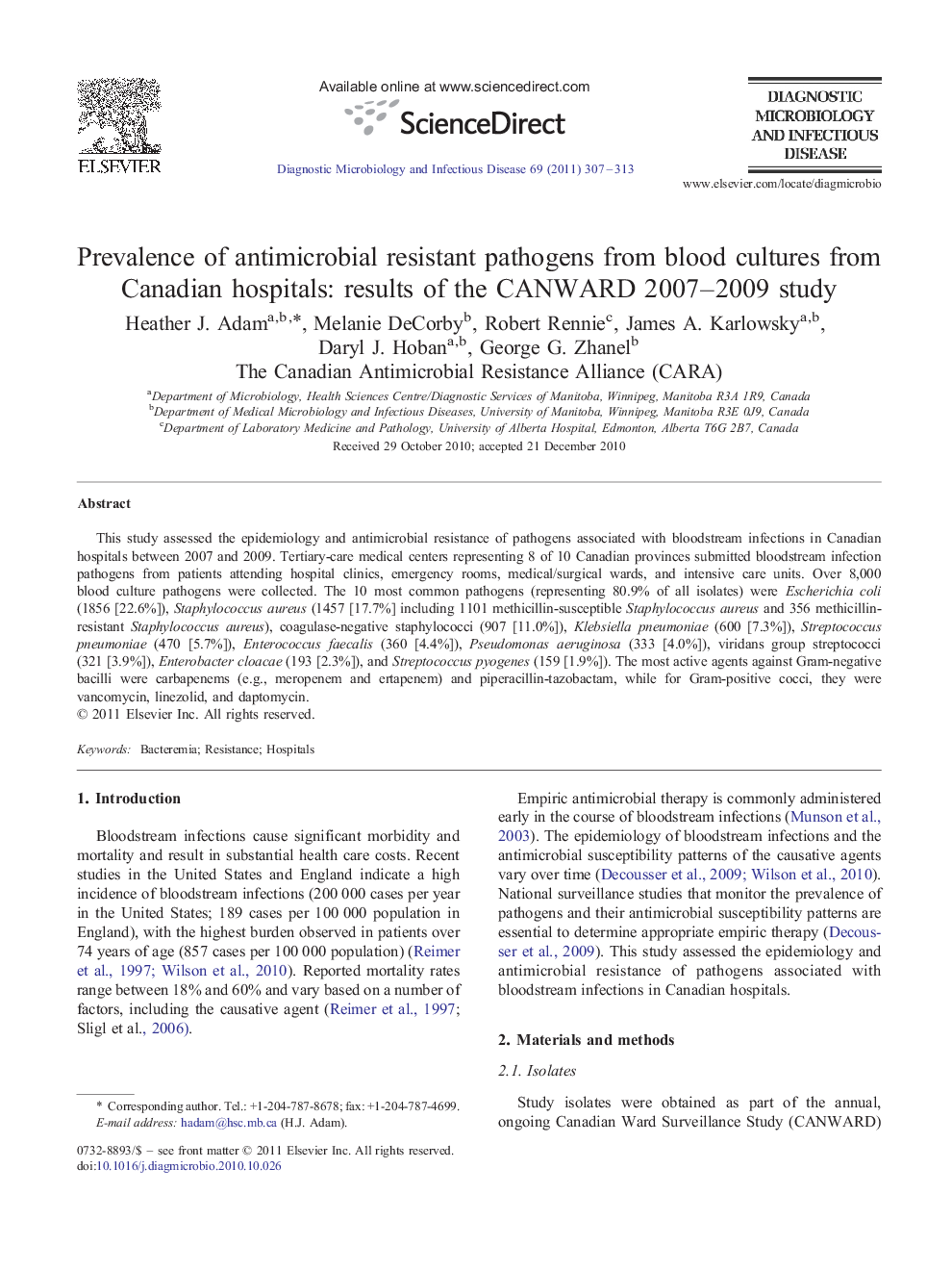| Article ID | Journal | Published Year | Pages | File Type |
|---|---|---|---|---|
| 3347679 | Diagnostic Microbiology and Infectious Disease | 2011 | 7 Pages |
This study assessed the epidemiology and antimicrobial resistance of pathogens associated with bloodstream infections in Canadian hospitals between 2007 and 2009. Tertiary-care medical centers representing 8 of 10 Canadian provinces submitted bloodstream infection pathogens from patients attending hospital clinics, emergency rooms, medical/surgical wards, and intensive care units. Over 8,000 blood culture pathogens were collected. The 10 most common pathogens (representing 80.9% of all isolates) were Escherichia coli (1856 [22.6%]), Staphylococcus aureus (1457 [17.7%] including 1101 methicillin-susceptible Staphylococcus aureus and 356 methicillin-resistant Staphylococcus aureus), coagulase-negative staphylococci (907 [11.0%]), Klebsiella pneumoniae (600 [7.3%]), Streptococcus pneumoniae (470 [5.7%]), Enterococcus faecalis (360 [4.4%]), Pseudomonas aeruginosa (333 [4.0%]), viridans group streptococci (321 [3.9%]), Enterobacter cloacae (193 [2.3%]), and Streptococcus pyogenes (159 [1.9%]). The most active agents against Gram-negative bacilli were carbapenems (e.g., meropenem and ertapenem) and piperacillin-tazobactam, while for Gram-positive cocci, they were vancomycin, linezolid, and daptomycin.
